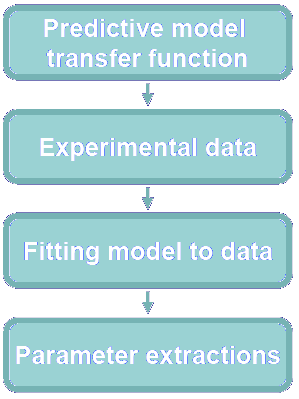Team:KULeuven/Data/Overview
From 2008.igem.org
(→Introduction) |
m |
||
| (9 intermediate revisions not shown) | |||
| Line 1: | Line 1: | ||
| - | {{:Team:KULeuven/Tools/ | + | {{:Team:KULeuven/Tools/Styling}} |
| + | {{:Team:KULeuven/Tools/Scripting}} | ||
| + | {{:Team:KULeuven/Tools/Header}} | ||
=== Introduction === | === Introduction === | ||
| - | When we | + | [[Image:Data_analyse.png|150px|right]] |
| + | When we developed the theoretical model of our system (see [[Team:KULeuven/Model/Overview | Modeling-section]]), the value of the different parameters (kinetic constants) were taken from different sources like Google Scholar, PubMed and biomedical databases, and will not fully represent the true scheme. This was performed to see if some unexpected behaviour was expected from that. Unfortunately, this kind of approximation does not have a predictable value if we do not know exactly the value of the model parameters. | ||
| - | Data analysis involves manipulating experimental data with the objective of extracting useful information. This then allows us to test our original hypotheses surrounding the problem, and in doing so, test the stringency/validity of our | + | Data analysis involves manipulating experimental data with the objective of extracting useful information. This then allows us to test our original hypotheses surrounding the problem, and in doing so, test the stringency/validity of our theoretical model. If the model proves to be valid, data analysis likewise provides a means of parameter extraction essential in rendering our theoretical model more realistic (as it gleans parameters from actual expimental data). |
Latest revision as of 14:59, 3 October 2008
Introduction
When we developed the theoretical model of our system (see Modeling-section), the value of the different parameters (kinetic constants) were taken from different sources like Google Scholar, PubMed and biomedical databases, and will not fully represent the true scheme. This was performed to see if some unexpected behaviour was expected from that. Unfortunately, this kind of approximation does not have a predictable value if we do not know exactly the value of the model parameters.
Data analysis involves manipulating experimental data with the objective of extracting useful information. This then allows us to test our original hypotheses surrounding the problem, and in doing so, test the stringency/validity of our theoretical model. If the model proves to be valid, data analysis likewise provides a means of parameter extraction essential in rendering our theoretical model more realistic (as it gleans parameters from actual expimental data).
 "
"

